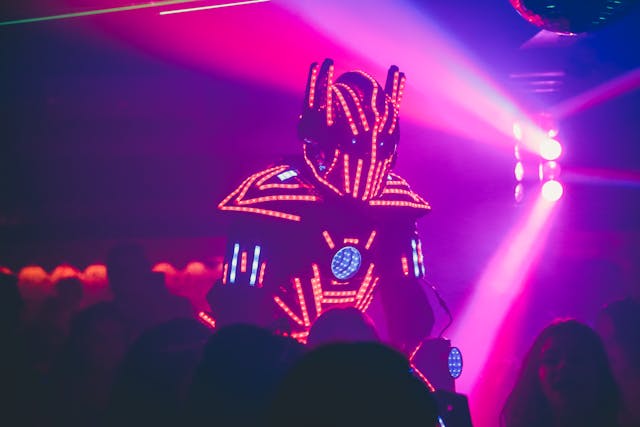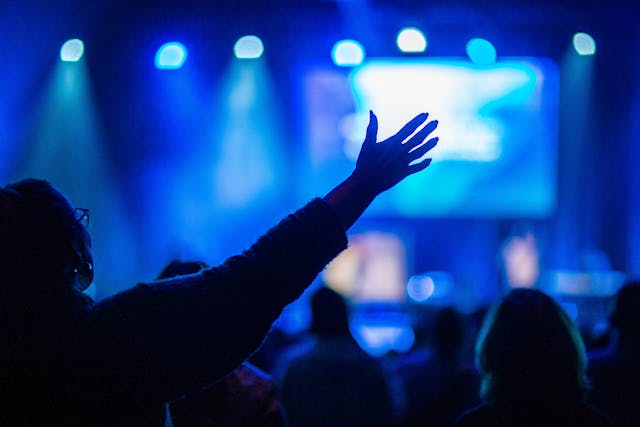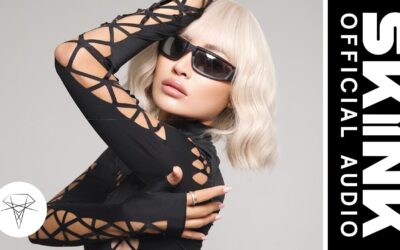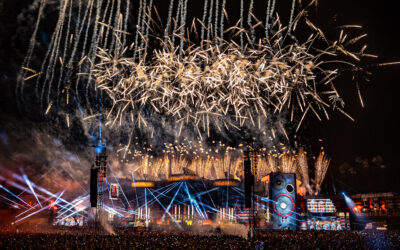The Evolution of EDM Dance Moves: From the Robot to the Wobble
Electronic Dance Music (EDM) has not only revolutionized the music industry but also reshaped the dance floors around the world. From its early beginnings to the global phenomenon it is today, EDM has inspired a multitude of dance moves that embody the energy, creativity, and freedom associated with this genre. This article explores the fascinating evolution of EDM dance moves, tracing their journey from the mechanical precision of the Robot to the fluid, groove-heavy Wobble.

The Robot: The Dawn of Mechanical Precision
The Robot dance move has a storied history that predates the rise of EDM. However, its influence on the genre is undeniable. Originating in the late 1960s and early 1970s, the Robot became popularized by performers like Michael Jackson and the breakdancers of the hip-hop movement. Characterized by its staccato, jerky movements that mimic the actions of a robot, this dance requires precise control and isolation of different body parts.
In the context of EDM, the Robot found a new home in the rave culture of the 1980s and 1990s. The repetitive beats and synthesized sounds of early electronic music meshed perfectly with the mechanical style of the Robot. As ravers sought ways to visually express the electronic and often otherworldly nature of the music, the Robot became a staple, embodying the futuristic and synthetic vibes of the era.
Liquid and Digits: The Rise of Flow Arts
As EDM evolved, so did the complexity of its dance moves. Enter Liquid and Digits, two styles that emerged in the late 1990s and early 2000s. These dance forms focus on smooth, flowing motions that create the illusion of liquid movement. Liquid dancing primarily involves the arms and hands, creating a continuous, wave-like effect. Digits, on the other hand, centers around intricate finger movements, often weaving patterns in the air.
These styles were born from the underground rave scene, where dancers would often perform in dark, neon-lit environments. The hypnotic nature of Liquid and Digits complemented the trance and ambient sub-genres of EDM, enhancing the psychedelic experience of the music. Glow sticks and LED gloves became popular accessories, adding a visual element that accentuated the fluidity of the dance.
Shuffling and Cutting Shapes: The Melbourne Influence
The early 2000s saw the rise of a new EDM dance craze known as shuffling, particularly the Melbourne Shuffle. Originating from Melbourne, Australia, this dance is characterized by quick heel-and-toe movements, combined with slides and spins. The basic steps of the Melbourne Shuffle are the “running man” and the “T-step,” which dancers can combine in various ways to create their own unique routines.
Shuffling became synonymous with hardstyle and house music, genres known for their high BPM (beats per minute) and energetic rhythms. As the EDM scene grew globally, so did the popularity of shuffling. Dance enthusiasts began uploading tutorials and performances to platforms like YouTube, leading to a worldwide shuffle community. Events and festivals like Tomorrowland and Ultra Music Festival further showcased the dance, solidifying its place in EDM culture.
Dubstep and the Rise of the Wobble
The 2010s marked the explosive growth of dubstep, a genre characterized by its heavy basslines and syncopated rhythms. With this new sound came a new dance move: the Wobble. Dubstep dancing, often referred to as “womping” or “wobbling,” emphasizes the bass “drops” and wobbly basslines typical of the genre. Dancers incorporate elements of popping and gliding, but with a greater emphasis on hitting the beats in sync with the music’s dramatic changes.
The Wobble is less about strict technique and more about feeling the music. Dancers often improvise, using their entire body to mirror the dynamic shifts in the music. This style of dance is visually captivating, as it appears almost as if the dancer is being controlled by the sound waves themselves. The popularity of dubstep artists like Skrillex and Bassnectar helped bring the Wobble to mainstream audiences, where it became a defining feature of the dubstep experience.
Kandi Culture and Rave Fashion
No discussion of EDM dance moves would be complete without mentioning the cultural elements that accompany them. Kandi culture, associated with the exchange of colorful bead bracelets known as “kandi,” plays a significant role in the rave and EDM scenes. This tradition, rooted in the principles of PLUR (Peace, Love, Unity, and Respect), fosters a sense of community among ravers. The fashion that accompanies EDM events—bright colors, neon accessories, and often eccentric outfits—enhances the overall dance experience.

Twerk and Trap: The Crossover of Hip-Hop and EDM
As EDM continued to evolve, it began to intersect more heavily with other genres, particularly hip-hop. The rise of trap music, a sub-genre that blends elements of EDM and Southern hip-hop, brought with it new dance styles. Twerking, characterized by its focus on the hips and lower body, became increasingly prevalent in EDM settings, particularly within the trap and bass music scenes.
Twerking, which has roots in various African dance traditions and was popularized in the American South, became a global phenomenon thanks to viral videos and social media. Its incorporation into EDM events symbolized the genre’s growing diversity and its ability to absorb and adapt elements from other musical traditions.
Festival Culture and Freestyle Dancing
The explosion of music festivals around the world has had a profound impact on EDM dance culture. Events like Electric Daisy Carnival, Coachella, and Tomorrowland have become epicenters for dance innovation and expression. Festival culture encourages freestyle dancing, where attendees are free to move however they feel inspired by the music. This environment fosters creativity and the blending of various dance styles.
At these festivals, dancers can be seen combining elements of shuffling, Liquid, Digits, and even traditional dance forms. The emphasis is on individual expression and enjoying the music, rather than adhering to any specific style or technique. This freestyle approach has led to the emergence of hybrid dance forms, where personal style and improvisation are paramount.
The Role of Social Media and Dance Challenges
In the digital age, social media platforms like Instagram, TikTok, and YouTube have played a crucial role in the evolution of EDM dance moves. Dance challenges, often set to popular EDM tracks, go viral, spreading new moves and trends around the world almost instantaneously. These platforms allow dancers to share tutorials, performances, and innovative routines, creating a global community of dance enthusiasts.
One notable example is the “Harlem Shake” phenomenon of 2013. Though not originally an EDM track, Baauer’s “Harlem Shake” became a viral sensation, with people from all over the world uploading videos of themselves dancing to the song in absurd and often humorous ways. This trend exemplified how EDM and its associated dances could capture the imagination of a global audience.
Looking to the Future: The Next Wave of EDM Dance Moves
As EDM continues to evolve, so too will its dance moves. The genre’s ability to incorporate influences from various musical styles ensures a constant influx of new ideas and trends. Future EDM dance moves are likely to be shaped by advancements in technology, changes in musical trends, and the ever-present influence of social media.
Virtual reality (VR) and augmented reality (AR) are poised to revolutionize the way we experience music and dance. VR music festivals and AR dance tutorials could offer new ways for dancers to learn and perform. Additionally, as EDM continues to intersect with other genres, we can expect to see even more hybrid dance styles emerge, blending elements from around the world.
The evolution of EDM dance moves, from the precise mechanics of the Robot to the freeform fluidity of the Wobble, mirrors the genre’s own journey from underground raves to mainstream festivals. Each dance style reflects the unique characteristics of its corresponding musical sub-genre, highlighting the diversity and creativity that define EDM. As the genre continues to grow and evolve, so too will the dance moves that accompany it, ensuring that the dance floors of tomorrow will be as dynamic and vibrant as ever.



